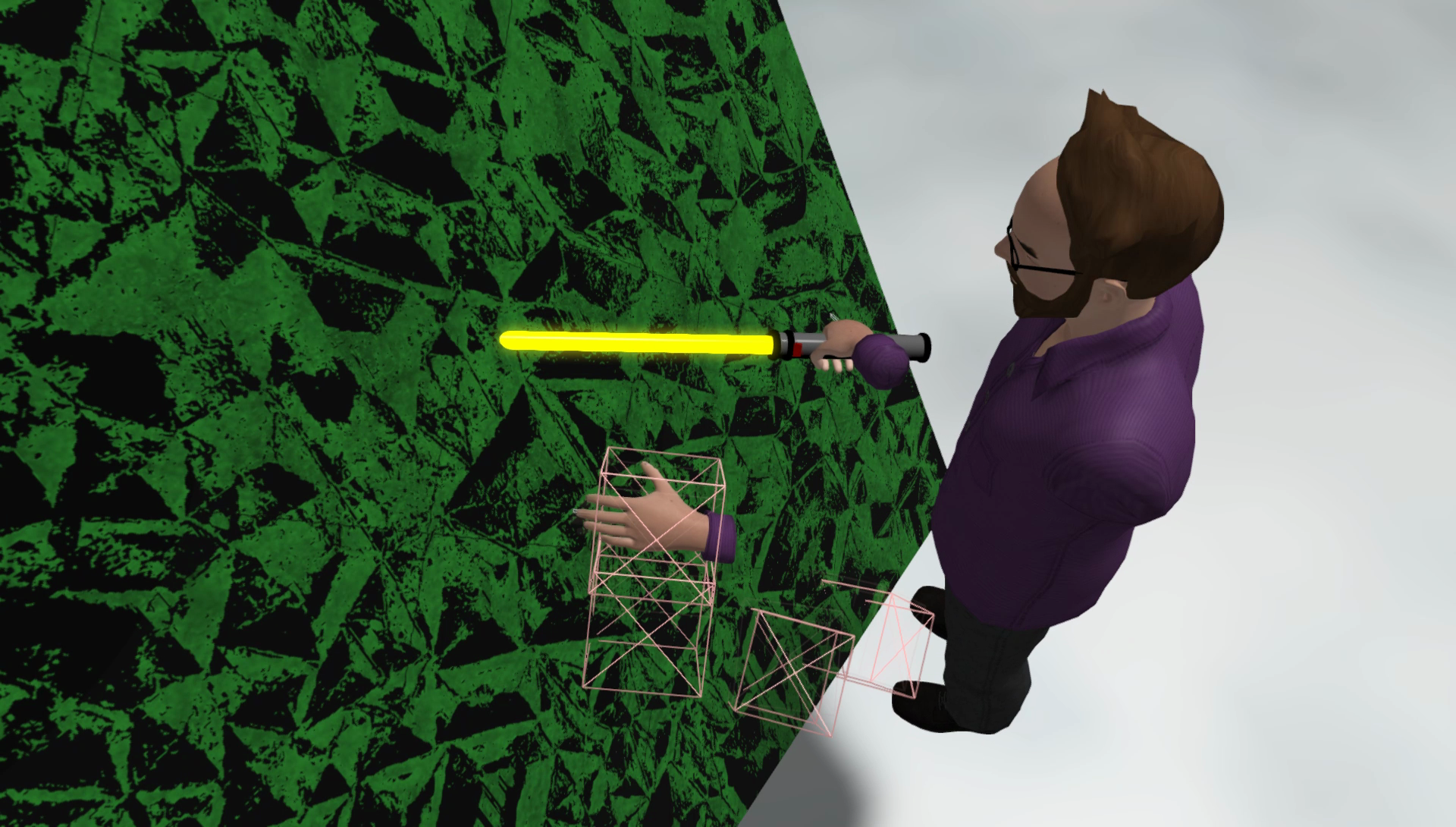Virtual Stage is a project to use virtual reality (VR) technology as an audiovisual performance interface. Creating feedback between interaction and perception, the VR environment references the viewer’s behavioral intuition developed in the real world, building the performer’s understanding of body and space in the virtual world. This system is used to play interactive, digital instruments and the audience views the performance through a projection into the virtual space.
This project combines several layers of programming and hardware implementation. The primary goal is to create an interface for computer-music, multimedia techniques that I find are often difficult to control with typical interfaces. This has evolved into something that is not restricted to a single iteration, but is part video game, instrument, installation, and performance. My goal is to continue to explore these techniques along with my present interests and to adapt to the parameters of different exhibitions/media.
This video version was performed at Corporeality, April 17, 2017, a show created by the Intermedia Performance Art class at the University of North Texas (UNT), which included graduate and undergraduate students from across the disciplines of visual, art, music and dance, as well as participating graduate choreographers from Texas Womens University (TWU). Together they have utilized an array of traditional forms and emerging technological possibilities to create a cycle of evocative works. corporeality2017.wordpress.com
The Corporeality Virtual Stage performance consisted of mapping the visual space to three TV towers, further rebuilding the body space of the performer. The performer experiments with simple percussive shapes — plates, mallets, and balls — creating electronic sounds and reactions in the video space. The displacement of the performer’s body and the abstract interactions create an alien world that is comedic and unsettling.
As a record of this manifestation, rather than reproducing a video of the performance, an additional version was created to place the viewer themselves in a virtual reality space. The performer and viewer meet together in a remapped body-environment, both embedded on digital screens.
Click here for the entire dissertation paper.
